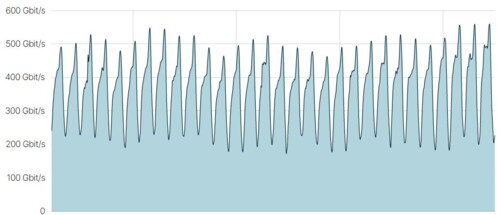Summer peaks at DE-CIX Internet Exchanges

It might be the core season for holidays in northern hemisphere, but the data throughput at DE-CIX Internet Exchanges keeps on growing. Typically, it is odd to see traffic spikes in the middle of summer, when people tend to be more outdoorsy. But in addition to the entertainment side of Internet use, for example, worldwide software updates rolled out simultaneously are a significant driver of data throughput. Here is the roundup of the bigger peaks from the past few months.
Dallas 560.17 Gbps
DE-CIX Dallas reached 300 Gigabit per second (Gbps) late last year and the traffic as well as the number of connected networks continues to grow. The 500 Gbps line was crossed back in June and now we are at 560 Gbps. The exchange connects over 100 networks and ranks among the top 20 largest Internet Exchanges in the US.
Frankfurt 12.43 Tbps
Beginning of August Frankfurt had a new record of 12.43 Terabits per second (Tpbs). With this new record, data traffic at the exchange has already increased by 14 percent this year and by as much as 50 percent since the start of 2020. Giving the number a real-life example, 12 Tbps is as much as 2.64 million HD-quality videos streamed simultaneously.
Hamburg 250.80 Gbps
Hamburg has been enjoying steady growth both in terms of traffic and the number of connected networks. Last year, we changed over from the old /24 network to a new bigger /23 network and the customer bandwidth increased by 40 percent. This week, the exchange reached a new peak of 250 Gbps.
Marseille 170.16 Gbps
Back in January, DE-CIX Marseille crossed the 150 Gbps and we are now at 170 Gbps. Last year the exchange had significant growth of almost 70 percent in connected capacity and 9 percent in connected networks. Due to the intercontinental cables landing in the region, we have an interesting mix of international networks connected in Marseille: just over a third of the networks originate from Europe, slightly less from the US and then 12 percent, 10 percent, and 7 percent from Asia, the Middle East, and Africa respectively.